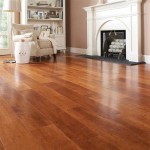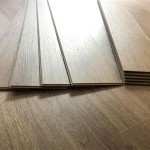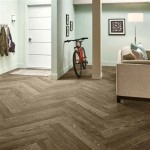What Sizes Do Laminate Flooring Come In? Inches, Charts, and Graphs
Laminate flooring is a popular choice for homeowners due to its affordability, durability, and ease of installation. It mimics the look of natural materials like hardwood, stone, and tile, but at a fraction of the cost. One of the key factors to consider when choosing laminate flooring is the size of the planks. Laminate planks come in a variety of sizes, each with its own advantages and disadvantages. Understanding the different sizes and how they can affect the overall look and feel of your space is essential for making an informed decision.
Understanding Laminate Flooring Sizes
Laminate flooring planks are typically measured in inches, and the two main dimensions to consider are the length and width. The length of the plank can range from 12 inches to 48 inches or longer, while the width can vary from 4 inches to 8 inches. There are also variations in the thickness, which usually falls between 8mm and 12mm.
The choice of plank size depends on various factors, including the size of the room, the desired aesthetic, and the budget. Here's a closer look at how different sizes can impact the final outcome:
Impact of Plank Size on Aesthetics
The size of the planks can significantly affect the overall look and feel of the flooring. Shorter planks can create a more traditional, cozy atmosphere, while longer planks can make a space feel larger and more contemporary. Wider planks offer a more spacious and luxurious appearance, while narrower planks add a touch of sophistication and elegance.
For example, a small room with short, narrow planks might appear cluttered and cramped. On the other hand, a large room with long, wide planks might feel too expansive and cold. The key is to choose a size that complements the room's dimensions and the desired ambiance.
Impact of Plank Size on Installation
The size of the planks can also influence the ease of installation. Shorter and narrower planks are typically easier to handle and install, particularly in tight spaces or around obstacles. Longer and wider planks require more precision and care during installation, especially for beginners.
Additionally, the length and width of the planks can affect the amount of waste generated during installation. Cutting and fitting larger planks can lead to more waste, especially in rooms with complex layouts or many corners. It's important to consider the potential for waste and factor it into the overall budget when choosing plank size.
Popular Laminate Flooring Sizes
Here's a breakdown of some popular laminate flooring plank sizes and their typical applications:
Small Size (12-24 inches in length, 4-6 inches in width):
- Ideal for small rooms or rooms with intricate layouts.
- Creates a traditional or rustic feel.
- Can be more affordable than larger plank sizes.
Medium Size (24-36 inches in length, 6-8 inches in width):
- A versatile option suitable for a wide range of spaces.
- Strikes a balance between a modern look and a traditional feel.
- Offers good value for money.
Large Size (36-48 inches in length, 8-12 inches in width):
- Suitable for large rooms and open spaces.
- Creates a contemporary and minimalist look.
- May be more expensive and require more careful installation.
Charts and Graphs for Visualizing Sizes
Visualizing the different plank sizes can be helpful in making informed choices. Charts and graphs can illustrate the dimensions, their impact on the overall look, and their suitability for different room sizes.
For instance, a chart could list various plank lengths and widths, along with their corresponding visual effects and recommended room dimensions. A graph could display the relationship between plank size and the amount of material needed for a specific room area, helping homeowners estimate costs and plan accordingly.
While charts and graphs can be helpful, it's also important to consider the specific design and color of the laminate flooring. The visual impact of different plank sizes can vary depending on the overall pattern and shade of the flooring.
Beyond the Basics: Understanding Thickness
In addition to length and width, laminate flooring also has a thickness dimension. This affects the overall feel of the flooring and the level of soundproofing it offers. Thicker planks are generally more durable and provide better sound insulation, but they may also be more expensive.
Most laminate flooring comes in thicknesses ranging from 8mm to 12mm. Thicker planks are often preferred for high-traffic areas or areas where noise reduction is a priority. For example, 12mm thick laminate flooring is often used in commercial settings or in homes with a lot of foot traffic.
Ultimately, the best choice for you depends on your individual needs and preferences. It's always advisable to consult with a flooring specialist who can advise you on the best laminate plank size for your specific project.

Laminate Flooring Thickness Guide Blog Floorsave

The Complete Guide To Flooring Costs By Type Twenty Oak

What Size Does Wood Flooring Come In And Beyond Blog

What Size Does Wood Flooring Come In And Beyond Blog

Laminate Flooring Thickness Guide For Specific Room Teka

What Size Does Wood Flooring Come In And Beyond Blog

Pergo 02617 Accolade Laminate Flooring 7 6 Inch By 47 5 Plank Size With 633 24 Total Square Feet Per Pallet American Beech Blocked Tracker Tracking History Charts

What Size Does Wood Flooring Come In And Beyond Blog

Choosing The Right Wood Floor Width Expert Guide Carlisle Wide Plank Floors

Lvp Wear Layer Thickness Chart What Is A Good For Vinyl Flooring
See Also







